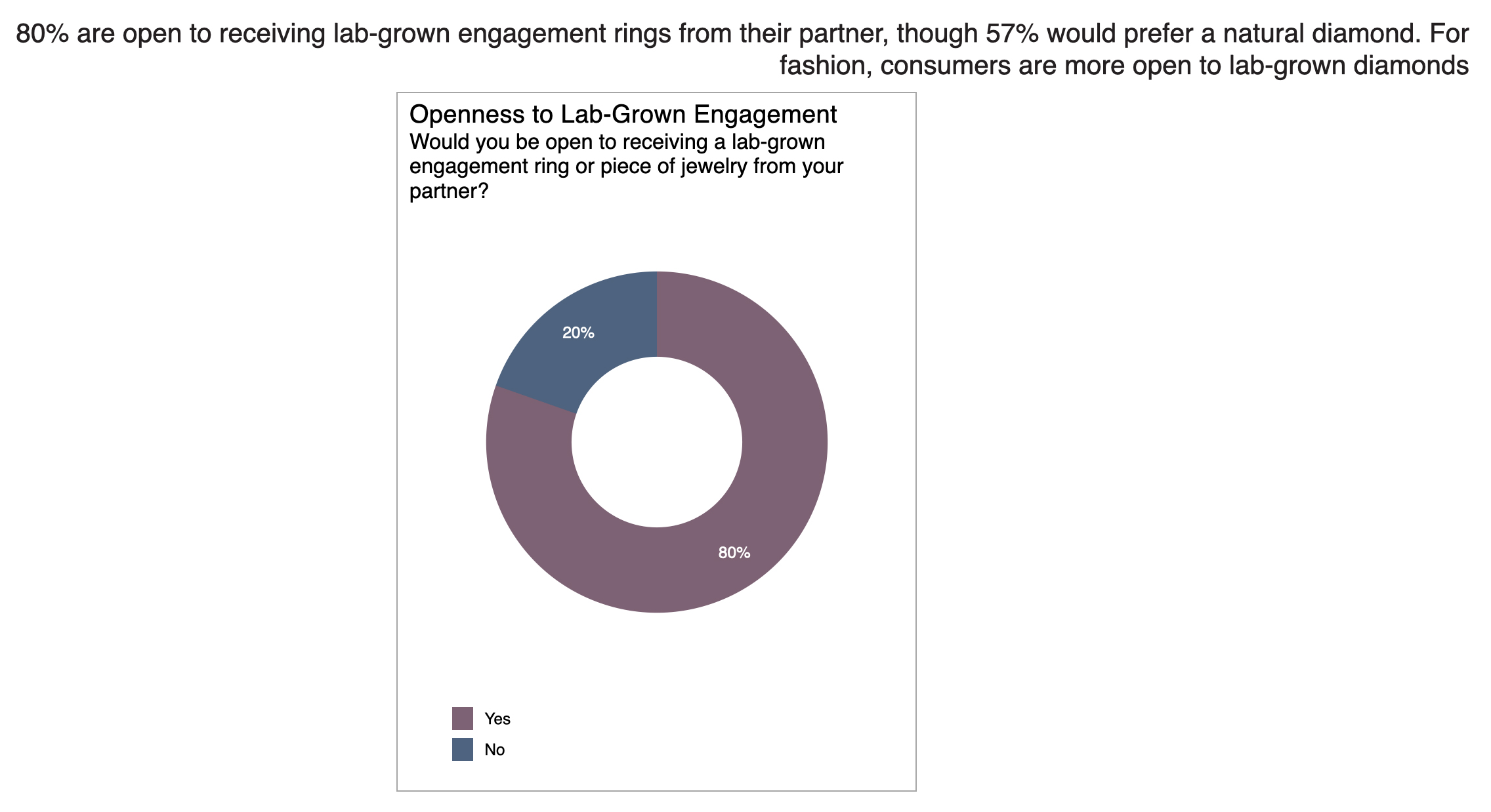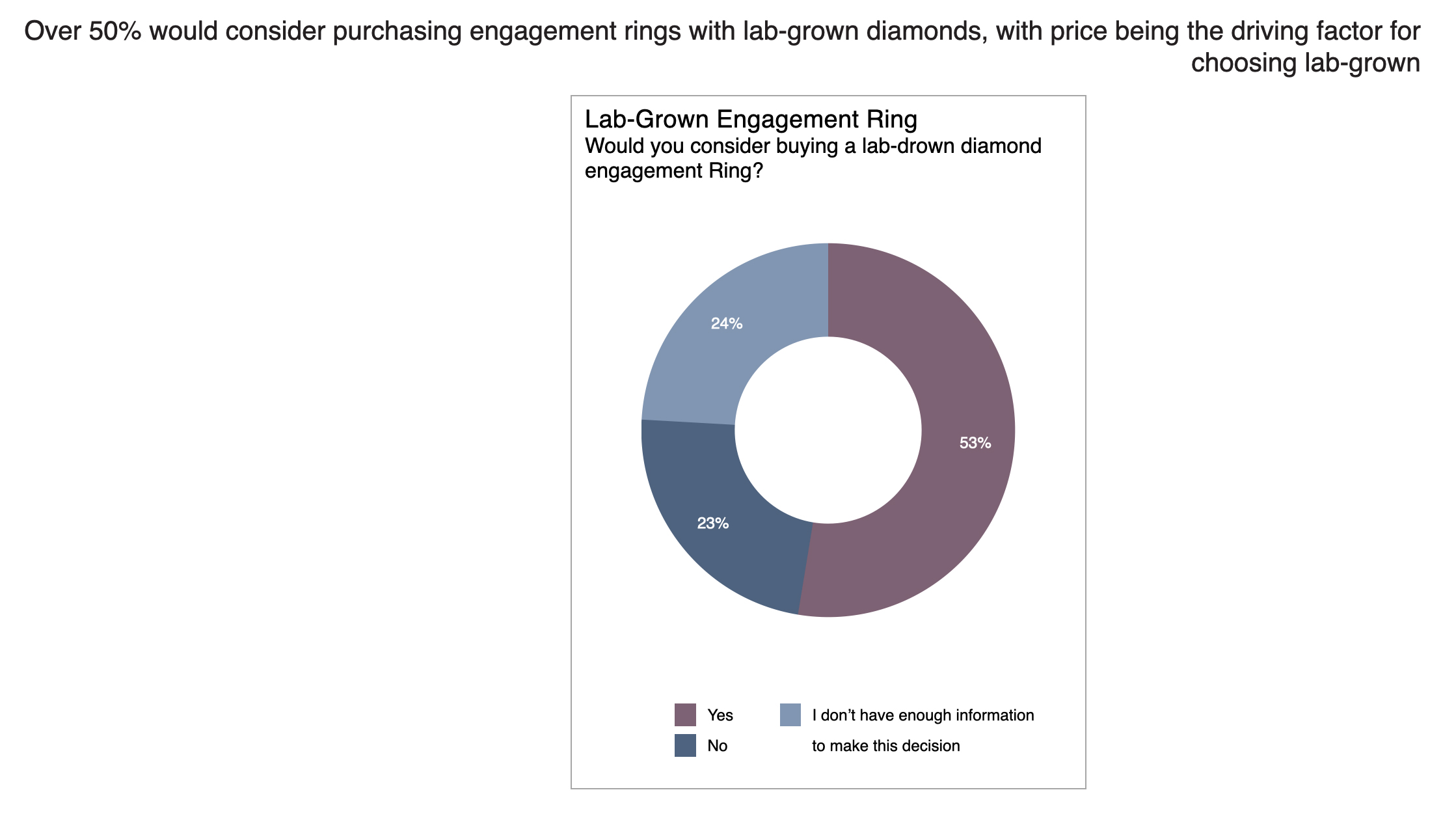IT COMES AS no surprise that diamond jewelry continues to be a reigning category at retail. After all, diamonds are the preeminent icon of love, they represent “forever” and are the quintessential symbol of socioeconomic status. This rare trifecta of positioning is underscored by the fact that diamond jewelry shared 54% of the U.S. jewelry market in 2021, according to Statistica.com. Further, that segment is expected to continue to rise at a rapid rate in the near future.
In recent years, the rise in visibility and awareness of lab-grown diamonds has been a source of much conversation in the jewelry industry. A recent consumer study initiated by The Plumb Club reveals that in this fast-growing merchandise category of diamonds, there is still plenty of opportunity for retailers on both sides of the fence.
The study reveals 78% of consumers are aware that both natural and lab-grown diamonds are used in fine jewelry. Although 21% of consumers say they know the differences between natural diamonds and lab-grown diamonds, 32% say they don’t know the differences and 47% say they don’t know enough to be confident of the differences between the two. Further, when asked about the definition of a lab-grown diamond, a significant 59% are mistaken in what that description is.


The obvious opportunity here is in the education of consumers on what the exact differences are to ensure a customer can make an informed choice on the diamond that is right for them.
Another interesting finding is that although surveyed consumers seem to prefer to purchase a natural diamond, they appear quite open to the idea of receiving a lab-grown diamond. When comparing two diamonds of the same cut, color, quality, and size, 75% would prefer to buy a natural diamond, but when asked if they would be open to receiving a lab-grown engagement ring or piece of jewelry from their partner, 80% said yes.


Additionally, the category of jewelry that a customer is purchasing also plays into their openness for lab-grown diamonds. When asked if they would consider buying a piece of fashion jewelry with lab-grown diamonds, 86% said they would. When asked if they would consider buying a lab-grown diamond engagement ring, the number who said yes dropped to 53%. However, it should be noted that 24% said they did not have enough information to make that decision — another indicator of the need for consumer education in this area.


When it comes to the chief determining factors in making a lab-grown diamond or lab-grown diamond engagement ring purchase, “price” and “getting a higher clarity/color” were the top-ranking elements, with 45% claiming price and 23% claiming quality.

All this said, when it comes to overall preference, a natural diamond still takes the lead. When consumers were asked which type of diamond they would prefer for either an engagement ring or a piece of fashion jewelry, the overall preference still leaned toward a natural diamond.

The insights shared here are part of a multi-faceted research study initiated by The Plumb Club with the assistance of Paola Deluca, The Futurist, and Qualtrics, a world-renowned survey and analytics firm. The study was conducted with a sampling of over 2,000 men and women from the ages of 25 – 60 with a balanced demographic and psychographic mix across the US with the goal of understanding how individuals engage with jewelry. Respondents had all attended some college or higher and had a combined household income of at least $75K/year. Additional information from this expansive research will be shared over the next several weeks. Any retailer wishing for more information on The Plumb Club Industry and Market Insights 2023 should contact their Plumb Club Member vendors. A full listing of Members can be found here.